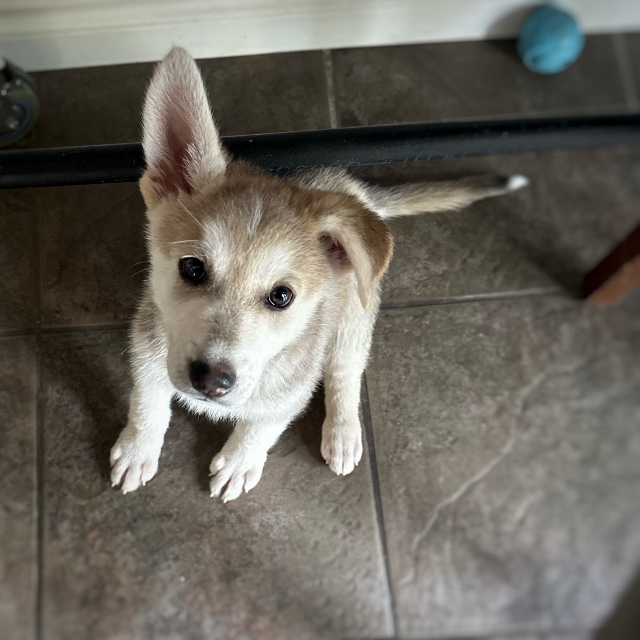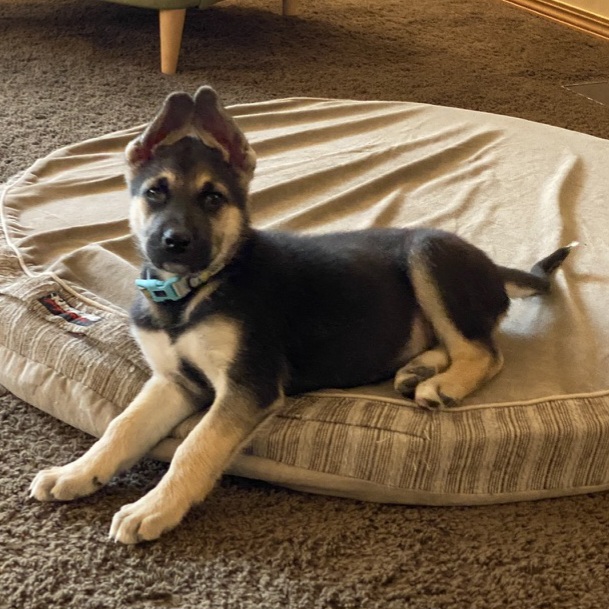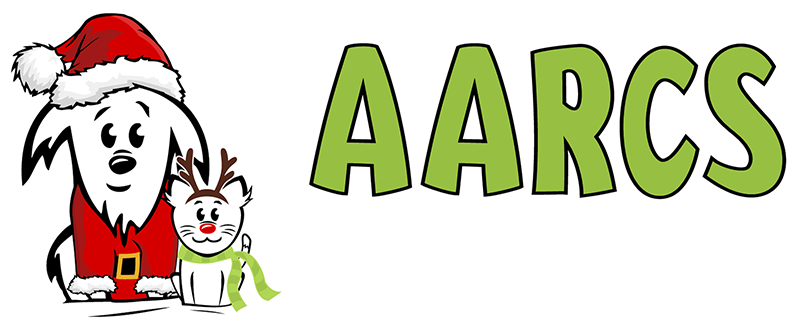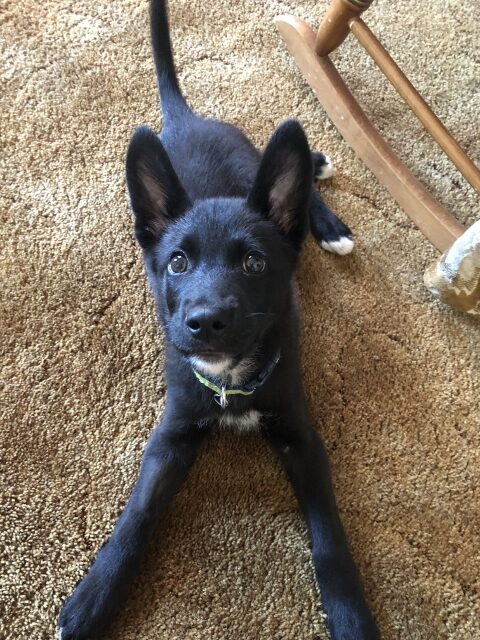Often it’s not convenient having your dog in the kitchen when you cook. So we’re going to teach them that they’re not allowed past a certain boundary, into the kitchen.
First, decide where these boundaries will be. If there are clear entry points, these are the best options. Often there will be flooring changes to mark the boundary (e.g. from wood to tile), but you can also put tape on the floor as a marker. This marker is more of a reminder for the humans & can be removed later.
- Stand on the kitchen side of the boundary & toss treats to your dog over the boundary
- If they try to cross the boundary into the kitchen, say ‘Ah-ah!’
- Walk towards them, using your body to control the space
- When your dog backs up over the boundary, say ‘Yes’
- Reward with a treat or praise
- Gradually move farther away from the boundary as you toss treats
- Slowly increase the amount of time your dog has to wait between the treat tosses

When your dog can stay behind the line with you 4-5 steps away, start increasing the level of distraction by mimicking kitchen activities! We want to keep the distraction level low at first, in order to set them up for success.
- Take a spoon out of the cutlery drawer, then put it back
- If your dog is still behind the boundary line, say ‘Yes’ & toss them a treat
- If your dog crosses over at any point, walk towards them, using your body to control the
space - When they back up over the boundary, say ‘Yes’ & reward

Naturally, this will take quite a bit of practice. But if every time someone goes in the kitchen, your dog gets rewarded for staying behind the line, they’ll catch on quickly.
Check out this video of practicing some Boundary Training: Boundary Training


